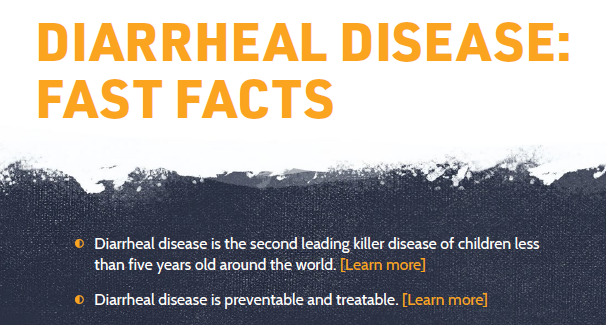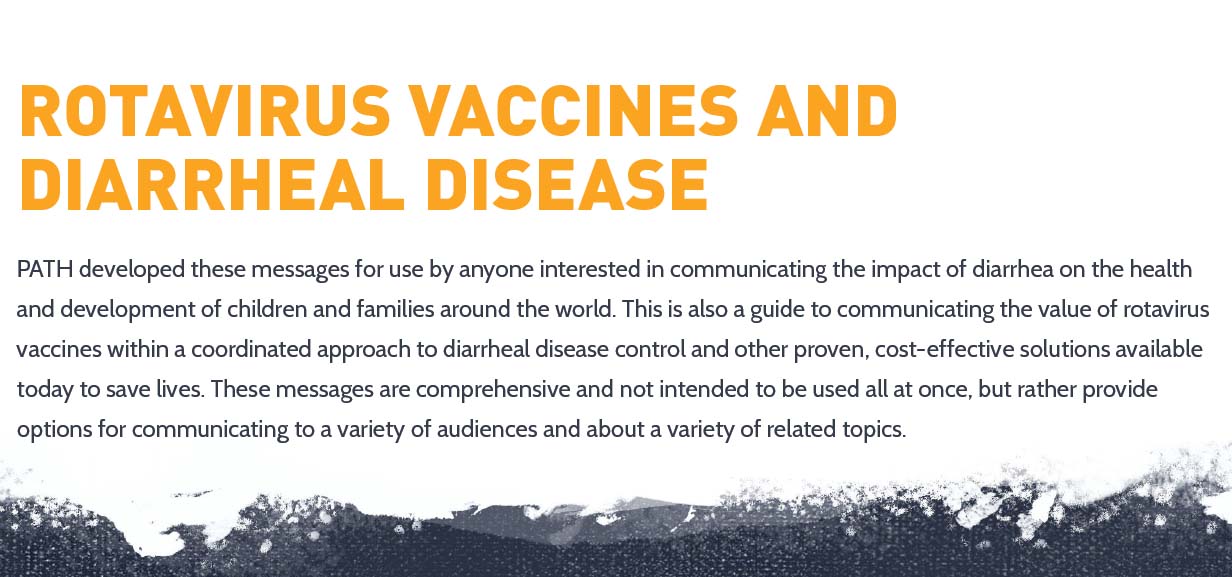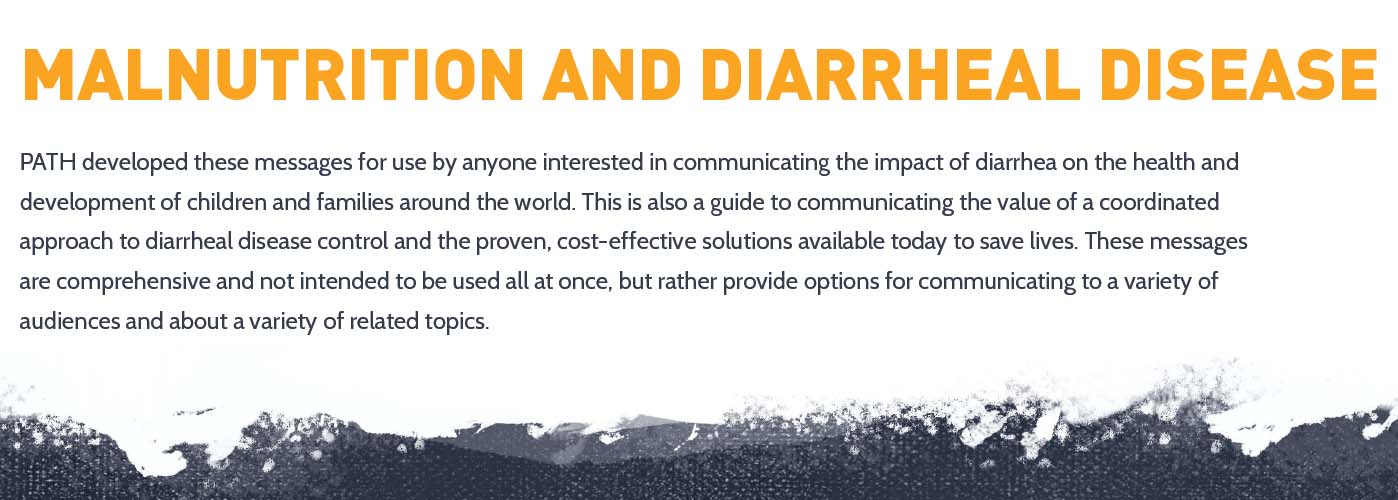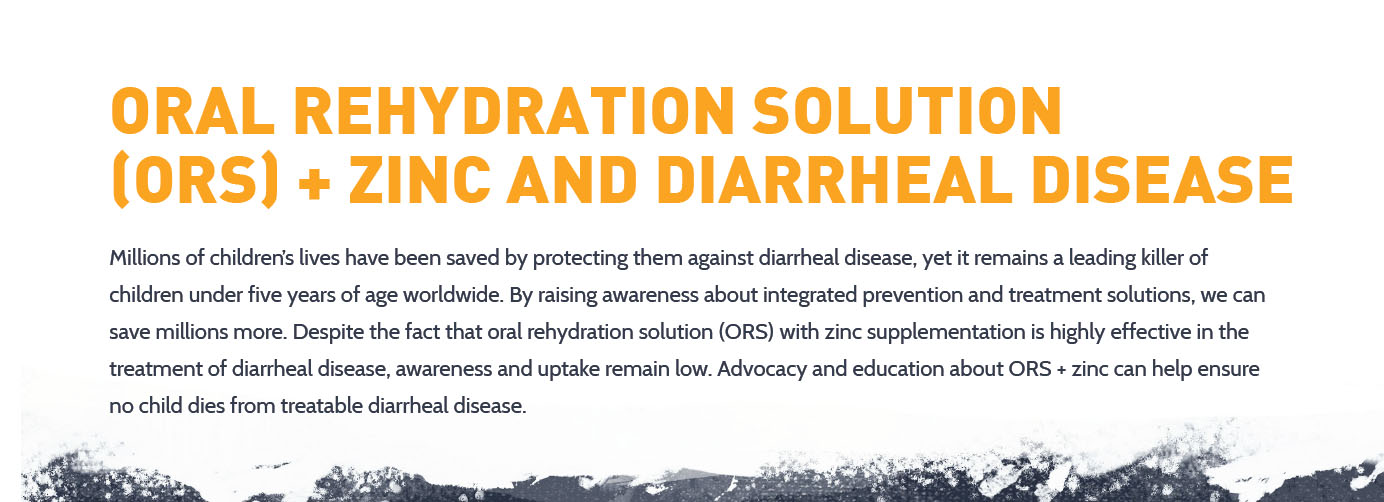
Diarrheal Disease: Fast Facts

Just the facts: these high-level talking points on diarrheal disease tell you what you need to know about the global crisis and the solutions. Each bullet includes a link to more information. View and share the message map in English and French or the plain text below.
- Diarrheal disease is the second leading killer disease of children less than five years old around the world. [Learn more]
- Diarrheal disease is preventable and treatable. [Learn more]
- Diarrhea kills almost half a million children under the age of five per year. [Learn more]
- Over the last two decades, deaths from diarrhea have plummeted by well over half. [Learn more]
- While diarrhea deaths have decreased, repeated cases of diarrhea remain a threat to long-term health and development. [Learn more]
- Recurring enteric pathogens, such as those that cause diarrheal disease, can damage a child’s digestive system. This can cause loss of IQ points and long-term growth shortfalls. [Learn more]
- Some common pathogens responsible for childhood diarrhea are: Shigella, rotavirus, Adenovirus, Enterotoxigenic E. Coli, Cryptosporidium, and Campylobacter. Shigella is becoming increasingly resistant to antibiotics. [Learn more]
- The World Health Organization and UNICEF recommend an integrated approach to prevent and treat diarrheal disease. The tools include vaccines, WASH (water, sanitation, and hygiene), nutrition, breastfeeding, and treatment with oral rehydration solution (ORS) + zinc. [Learn more]
- Vaccines produce immunity to disease and are the best form of protection in poor settings. Rotavirus vaccines prevent infection from the deadliest and most resilient cause of childhood diarrhea around the globe. Vaccines in development against other common pathogens hold great potential. [Learn more]
- Poor access to water, sanitation, and hygiene—collectively known as WASH—is responsible for more than half of diarrhea cases. [Learn more]
- Diarrhea is a leading cause of malnutrition in children under five years old, and children who are malnourished are more vulnerable to diarrheal disease. [Learn more]
- Breastfeeding provides all the essential nutrition infants need for growth and development and protects against dangerous infectious diseases like diarrhea. [Learn more]
- Oral rehydration solution (ORS) is a simple, lifesaving mixture of sugar and salt added to clean water that caregivers can give to children at home. ORS helps replace lost fluids that are essential to preventing deadly dehydration. [Learn more]
- Zinc promotes the production of antibodies and immune cells against diarrhea for faster recovery. [Learn more]
- Researchers are studying and developing new treatments and approaches to ease diarrhea symptoms, prevent dehydration, and protect children from long-term harm. [Learn more]


